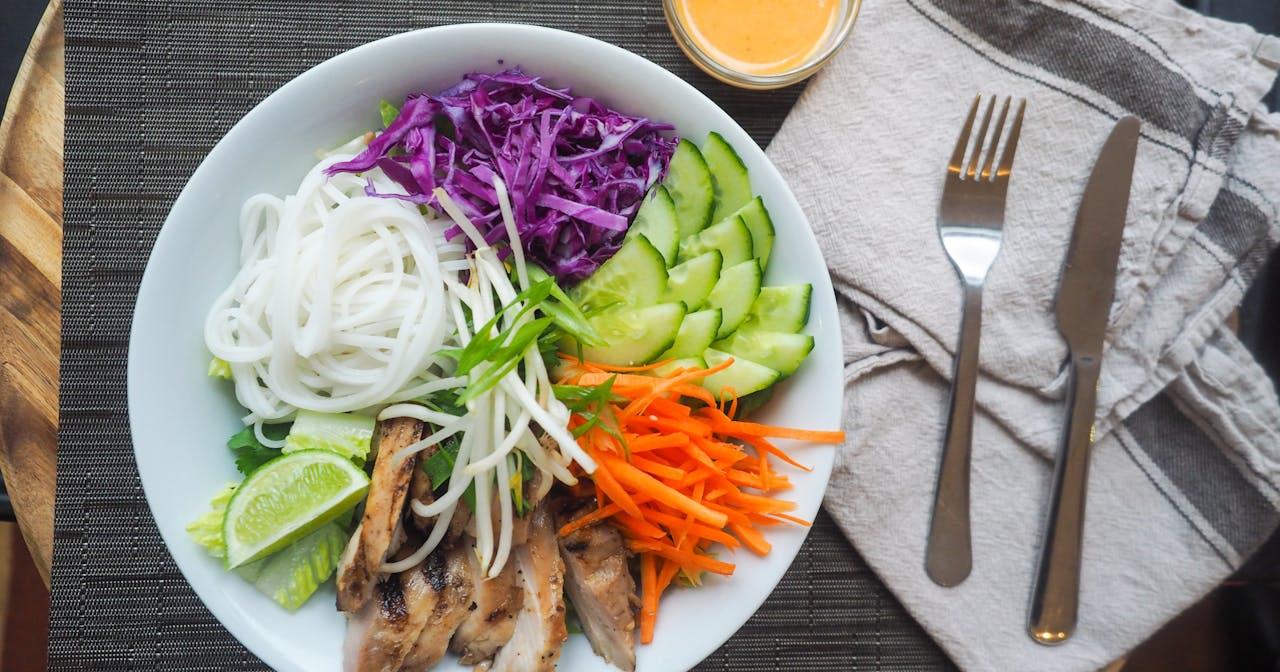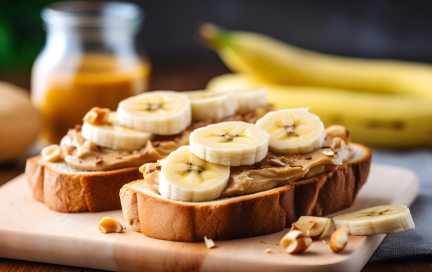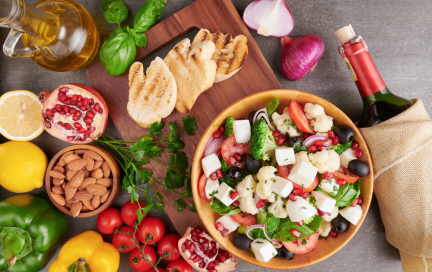{{ banner_block|raw }}
Created by nutrition experts at Harvard, this method helps you build balanced meals that support weight loss, boost energy, and keep you full — no diets or food rules required.
Benefits of the Harvard Plate
The Harvard Plate isn’t a diet — it’s a smarter way to eat that helps you reach your goal weight without starving yourself or obsessing over every bite. No strict diets. No food tracking. Just simple, healthy meals that help you lose weight and feel better — backed by science from Harvard.
The principles of the Healthy Plate were developed in 2011 by scientists from the Harvard T.H. Chan School of Public Health. This evidence-based approach is grounded in real science — not trends or fads.
The Harvard Plate method meets the body’s physiological needs and helps you stay healthy and fit — without strict diets or exhausting calorie counting.
Proper combinations and proportions of foods significantly reduce the chances of overeating.
This balanced approach has no strict rules and works for everyone — adults and kids alike. It can be used for breakfast, lunch, or dinner.
How to build your plate
The best part? It’s incredibly easy to follow — no complicated rules or apps required. When preparing your menu according to the Harvard Plate method, the key is to focus on two main factors: the types of foods and their percentage in relation to one another.
Healthy Plate Composition Guidelines
Half your plate: mostly veggies, plus a small portion of fruit (about 25% of that half). Go for leafy greens, roasted veggies, or colorful salads. Add olive oil or lemon juice for flavor.1/2 of the plate should be mostly filled with vegetables and some fruits. Fruits should make up about 25% of the total vegetable portion. Vegetable salads can be dressed with olive or flaxseed oil, lemon juice, or 1% fat kefir. This category also includes dishes made from baked or steamed vegetables.
One-quarter: whole grains like brown rice, quinoa, or whole wheat pasta.
One-quarter: lean protein — grilled chicken, salmon, eggs, tofu, or beans.
Essential components of the Harvard Plate
Proteins — the body's universal building material
Best sources of animal protein: ffish, poultry, eggs, cheese, cottage cheese.
Best sources of plant protein: beans, nuts, lentils, tofu, quinoa, chickpeas, peas, mushrooms.
Experts recommend limiting red meat and processed meat products such as bacon, sausages, and salami. Research has shown that a diet high in red meat or processed meat increases the risk of heart disease, stroke, and diabetes.
Swapping some red meat with poultry and fish can have a positive effect on your health.
Healthy fats, proteins, and carbs
Back in the 1960s, doctors warned Americans to avoid fats — and a wave of low-fat products hit the shelves. But the results weren’t great. The consumption of fat dropped significantly, but the number of people suffering from obesity and cardiovascular diseases did not. Notably, rates of type 2 diabetes rose sharply during the era when low-fat diets became mainstream.
When fat is removed from foods, the flavor often suffers. To compensate, manufacturers add flavor enhancers like refined carbohydrates, stabilizers, and simple sugars. This increases the caloric content, adding even more sugar to an already carbohydrate-heavy diet, leading to the spike in type 2 diabetes.
Moreover, fats help us feel full after eating. Therefore, low fat diets can leave us feeling hungry and that can lead to overeating.
Therefore, healthy fats are an essential part of the Harvard plate.
Mindfulness made easy — and 70% off. Use promo code MEDIUM and start training with us today.
"Good" fats are monounsaturated and polyunsaturated fats. Polyunsaturated fats contain omega-3 and omega-6 fatty acids, which are essential for health, while monounsaturated fats provide omega-9. Salads and other dishes should be dressed with plant-based oils like corn, olive, sunflower, soybean. The Harvard plate also includes nuts, seeds, and, of course, fish.
"Bad" fats — especially artificial trans fats — are found in processed snacks and store-bought baked goods like cakes, cookies, and pies. These fats are known to increase the risk of heart disease and other chronic conditions, which is why many health experts recommend avoiding them whenever possible.

Fruits and vegetables are the basis of a healthy diet according to the Harvard Plate method
Vegetables and fruits are a natural source of vitamins and minerals. When fruits and veggies make up a big part of your meals, you’re naturally getting the fiber, vitamins, and minerals your body needs — no extra supplements required.
The Harvard Plate includes canned, fresh, and frozen foods, as well as vegetables included in other dishes, such as stewed with pasta.
The list of healthy vegetables and fruits is huge.Try spinach, kale, carrots, tomatoes, avocados, berries, apples, bell peppers, and roasted sweet potatoes.
Is there a place for potatoes on the Harvard plate? Because of their high starch content, they raise blood glucose levels almost as quickly as sugar. For example, fried potatoes have a glycemic index of 95. Potatoes get a bad rap because of how they're usually served (hello, fries!). But baked or roasted with the skin on? They’re a great source of fiber and potassium.
Looking for healthy recipes? Don’t miss our helpful collection — simple, tasty, and good for you! 💚
Whole grain products
Whole grain pasta, quinoa, oatmeal, barley, and whole grain bread are essential components of the Harvard plate.Unprocessed grains are more nutritious and more valuable than refined ones. The less processed the grain, the more beneficial it is for the body, as it has less effect on blood sugar and insulin levels. Whole grain products release their energy slowly, provide long-term satiety and help prevent overeating. Due to their high fiber content, they control cholesterol and insulin levels, and normalize blood pressure.
When shopping for groceries, check the ingredient list — “whole grain” or “whole grain flour” should be one of the first ingredients, not the last.
Water and drinks
The healthiest drinks are water, herbal teas, fruit drinks & coconut water. Cut out sugary sodas — they offer zero nutrition and mess with your metabolism. In addition to being completely harmful to the body, they are of no nutritional value. These drinks are high in calories, cause a spike in glucose levels, damage your internal organs, and impairs the body's ability to heal itself, leading to chronic diseases.

Limiting sugar consumption
You shouldn't give up sugar completely, because it is a source of energy and nutrition for the brain. Experts recommend no more than 25 grams per day for women and 36 grams for men — but the average American eats more than 160 grams daily. That’s over six times the limit.
Sample daily menu
Breakfast: Avocado toast on whole grain bread + 2 scrambled eggs + sautéed spinach and cherry tomatoes.
Lunch: Grilled chicken breast + quinoa + roasted Brussels sprouts and carrots + a side of berries.
Dinner: Baked salmon + brown rice + steamed broccoli and a mixed green salad with olive oil.
About the size of a Harvard Plate
It is clear that the larger the plate, the more food can fit on it. Standard dinner plates are about 11 inches wide — but switching to a smaller 8–9 inch plate can naturally help you eat less without even noticing.
Why it works
When making up the Harvard Plate menu, you don’t limit yourself in products, you just need to keep the proportions. Want to eat a sandwich? No problem – put canned tuna on a piece of whole grain bread, add lettuce leaves, greens, tomatoes and cucumbers – tasty, satisfying and healthy.
Bored of plain chicken? Try baked salmon with creamy avocado and a fresh veggie slaw — it’s just as easy, but way more exciting. Including a variety of foods with different nutrients and health benefits helps ensure your diet is balanced, diverse, and supports your overall well-being.
Sticking to the Harvard Weight Loss Plate makes it easier to follow science-based nutrition and avoid overeating — no calorie counting needed.
If you have a physically demanding job or work out regularly — at least 3 to 4 times a week — you likely need more protein, as 100 grams per day may not be enough to meet your body’s needs.
Conclusion
This isn’t a short-term diet. It’s a long-term, science-backed way to eat that keeps your body strong, your energy up, and your weight in check — without the stress.
The correct ratio of products in your diet will have the most positive effect on your health. Your digestion improves, your body resets, and you start to feel the difference — inside and out.
Extra pounds go away. Moreover, unlike strict diets, losing weight with the Harvard Plate is a long-term solution.
Ready to build on your progress and feel even better in your body? Now’s the perfect time to start moving. Our online workout platform offers a wide range of home workouts designed for your goals — whether it’s weight loss, building strength, boosting energy, improving flexibility, or just feeling good. You’ll also find simple, nutritious recipes that make healthy eating easy and enjoyable.
Want more support? Get access to personalized workouts and recipes tailored to you — everything you need to feel great in your body. Use code MEDIA for 70% off.
FitStars, with love!
















